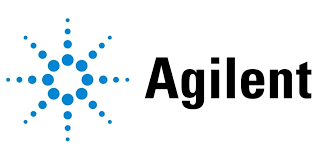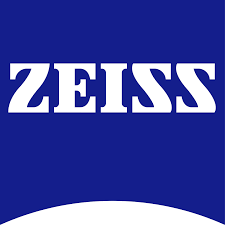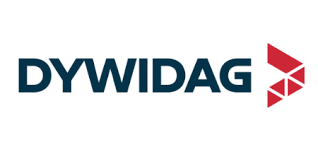Ai In Life Sciences
Published Date: 15 December 2025 | Report Code: ai-in-life-sciences
Ai In Life Sciences Market Size, Share, Industry Trends and Forecast to 2033
This report provides an extensive analysis of the AI in Life Sciences market forecast from 2024 to 2033. It offers key insights into market size, growth, segmentation, regional analysis, technological advancements, and product performance. With data-driven analysis and detailed industry trends, the report aims to support strategic decisions for stakeholders for robust market foresight.
| Metric | Value |
|---|---|
| Study Period | 2024 - 2033 |
| 2024 Market Size | $10.50 Billion |
| CAGR (2024-2033) | 8.2% |
| 2033 Market Size | $21.83 Billion |
| Top Companies | BioTech Innovators Inc., MedAI Solutions, Genomic AI Labs, HealthTech Pioneers |
| Last Modified Date | 15 December 2025 |
Ai In Life Sciences (2024 - 2033)
Ai In Life Sciences Market Overview
Customize Ai In Life Sciences market research report
- ✔ Get in-depth analysis of Ai In Life Sciences market size, growth, and forecasts.
- ✔ Understand Ai In Life Sciences's regional dynamics and industry-specific trends.
- ✔ Identify potential applications, end-user demand, and growth segments in Ai In Life Sciences
What is the Market Size & CAGR of Ai In Life Sciences market in 2024?
Ai In Life Sciences Industry Analysis
Ai In Life Sciences Market Segmentation and Scope
Tell us your focus area and get a customized research report.
Ai In Life Sciences Market Analysis Report by Region
Europe Ai In Life Sciences:
Europe continues to be a vital market with a strong focus on regulatory compliance and standardization. In 2024, the market was valued at 3.09 billion and is expected to reach 6.43 billion by 2033. The European market benefits from collaborative research initiatives, robust funding, and a well-integrated healthcare infrastructure that facilitates the adoption of AI technologies in life sciences.Asia Pacific Ai In Life Sciences:
In Asia Pacific, the AI in Life Sciences market is showing considerable promise, with a rising number of startups and increased government support for biotech innovations. The region benefits from a large patient base and expanding R&D investments, fostering rapid adoption of AI-driven life science applications. Emerging economies in the area are gradually embracing digital health technologies, contributing to steady market growth.North America Ai In Life Sciences:
North America remains a dominant market with significant capital investments from both private and public sectors. The region boasts leading technology companies, advanced research facilities, and a well-established healthcare system, all of which contribute to high-quality research and consistent market growth. Enhanced regulatory support and a culture of innovation continue to sustain market momentum.South America Ai In Life Sciences:
South America is beginning to recognize the potential of AI within healthcare and life sciences. Although smaller in scale compared to other regions, investments in digital infrastructure and an increasing number of collaborative projects between local research institutions and international tech companies are starting to drive market expansion. The region shows promise with evolving regulatory frameworks encouraging innovation.Middle East & Africa Ai In Life Sciences:
The Middle East and Africa are gradually emerging as important markets for AI in Life Sciences. With expanding healthcare infrastructure and growing investments in digital technologies, the region is poised for significant growth. Although market sizes are smaller relative to other regions, increasing focus on modernizing healthcare systems and supporting R&D activities is expected to drive gradual adoption and spur market development.Tell us your focus area and get a customized research report.
Ai In Life Sciences Market Analysis By Application
Global AI in Life Sciences Market, By Application Market Analysis (2024 - 2033)
The application segment is broadly categorized into pharmaceuticals, hospitals, diagnostic labs, and biotechnology companies. Pharmaceuticals have seen a considerable increase in adopting AI for drug discovery and clinical trial optimization, recording a market size of 5.55 billion in 2024 and growing impressively by 2033. Hospitals leverage AI for improving patient management and diagnostic accuracy, making them key contributors to market share. Diagnostic labs and biotechnology companies are using AI to streamline processes, improve test accuracy, and expedite research outcomes. This segmentation highlights distinct growth trajectories within the broader market and underscores the importance of targeted AI implementations across various healthcare applications.
Ai In Life Sciences Market Analysis By Product Type
Global AI in Life Sciences Market, By Product Type Market Analysis (2024 - 2033)
The product type segmentation focuses on machine learning, natural language processing, computer vision, and robotics. Machine learning leads the product segment with strong adoption across various applications, boasting market sizes that mirror those seen in the pharmaceuticals sector. Natural language processing is rapidly advancing, playing a critical role in interpreting and processing complex medical data. Computer vision is instrumental in diagnostic imaging and analysis, while robotics is transforming laboratory automation and surgical procedures. Each product type is tailored to address specific challenges in the life sciences, offering unique functionalities that enhance diagnostic accuracy, operational efficiency, and patient outcomes.
Ai In Life Sciences Market Analysis By Technology
Global AI in Life Sciences Market, By Technology Market Analysis (2024 - 2033)
The technology segment encompasses drug discovery, diagnostics, personalized medicine, clinical trials, and healthcare management. AI-driven drug discovery has accelerated the identification of novel compounds and shortened the R&D cycle. Diagnostics are evolving with AI algorithms providing faster and more accurate results critical for early intervention. Personalized medicine is being redefined through tailored treatment plans based on individual patient data. Clinical trials benefit from predictive analytics that streamline participant recruitment and monitoring. Additionally, healthcare management solutions are integrating AI to optimize hospital operations and resource allocation. This technology-oriented segmentation reinforces the varied applications of AI and emphasizes its transformative impact on every facet of life sciences.
Ai In Life Sciences Market Analysis By End User
Global AI in Life Sciences Market, By End-User Market Analysis (2024 - 2033)
The end-user segmentation highlights the role of software, hardware, and services in driving the AI revolution in life sciences. Software solutions dominate with advanced analytical tools that power data processing and decision-making. Hardware components, including sophisticated diagnostic machines and AI-integrated devices, support the underlying technology infrastructure. Services such as consultancy, integration, and support have become essential as organizations transition to AI-enabled systems. This mix of software, hardware, and service offerings ensures a comprehensive ecosystem that complements each other, leading to improved clinical outcomes and enhanced operational efficiency across various segments of the market.
Ai In Life Sciences Market Trends and Future Forecast
Tell us your focus area and get a customized research report.
Global Market Leaders and Top Companies in Ai In Life Sciences Industry
BioTech Innovators Inc.:
BioTech Innovators Inc. is a leading player known for integrating AI solutions into drug discovery and clinical research. Their pioneering platforms have accelerated the development of novel therapeutics and streamlined diagnostic processes.MedAI Solutions:
MedAI Solutions is at the forefront of applying artificial intelligence to healthcare management and patient diagnostics, offering state-of-the-art products and services that enhance clinical efficiency and improve patient care outcomes.Genomic AI Labs:
Genomic AI Labs specializes in utilizing machine learning and data analytics for genomic research and personalized medicine. Their innovative approach has significantly advanced precision therapies and medical research methodologies.HealthTech Pioneers:
HealthTech Pioneers leverages AI across various health sectors, including diagnostic imaging and surgical robotics. Their commitment to R&D and technology integration positions them as key contributors to the industry’s transformation.We're grateful to work with incredible clients.









FAQs
What is the market size of AI in life sciences?
The AI in Life Sciences market is projected to grow from $10.5 billion in 2024 to larger values by 2033, with a compound annual growth rate (CAGR) of 8.2% anticipated over this period.
What are the key market players or companies in this AI in life sciences industry?
Key players in the AI in life sciences industry include large pharmaceutical companies, tech giants specializing in AI solutions, and emerging biotech firms. Collaborations between these entities are essential for driving innovation and market expansion.
What are the primary factors driving the growth in the AI in life sciences industry?
Growth in the AI in life sciences industry is propelled by increasing demand for personalized medicine, advancements in machine learning, and the need for efficient drug discovery processes that enhance patient outcomes.
Which region is the fastest Growing in the AI in life sciences?
North America is currently the fastest-growing region in the AI in life sciences market, anticipated to grow from $3.94 billion in 2024 to $8.19 billion in 2033, highlighting significant investment in healthcare technology.
Does ConsaInsights provide customized market report data for the AI in life sciences industry?
Yes, ConsaInsights offers customized market report data tailored to specific needs within the AI in life sciences sector, ensuring clients receive relevant insights for strategic decision-making.
What deliverables can I expect from this AI in life sciences market research project?
Deliverables from the AI in life sciences market research project include detailed market analysis, growth forecasts, competitive landscape assessments, and actionable strategic recommendations.
What are the market trends of AI in life sciences?
Key trends include the increasing use of machine learning and natural language processing, emphasizing data-driven decision-making in pharmaceuticals, diagnostics, and healthcare management sectors.
